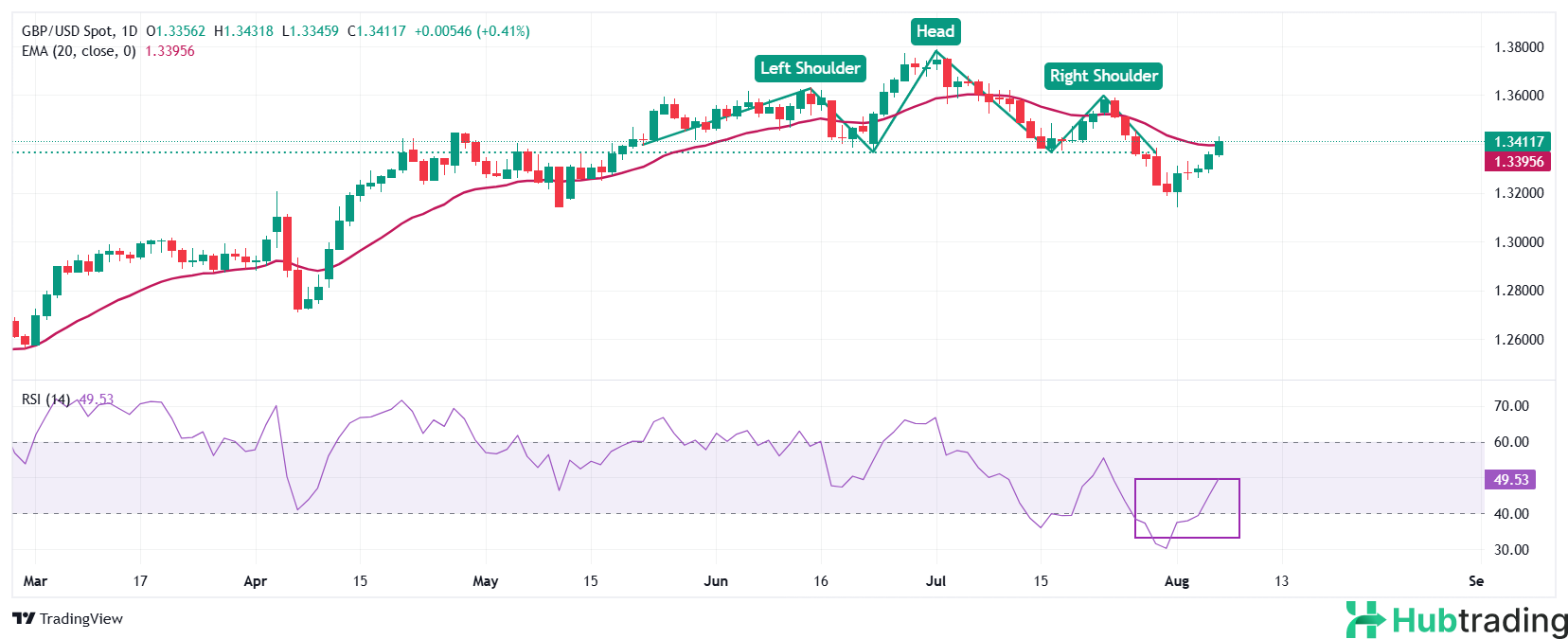-
Pound Sterling strengthens as the Bank of England lowers interest rates by 25 basis points to 4% in a narrow 5-4 vote.
-
BoE member Taylor advocated for a deeper 50 basis point rate cut.
-
An increasing number of Federal Reserve officials back rate cuts this year amid rising concerns over the labor market.
The Pound Sterling (GBP) gained strong traction against major currencies on Thursday after the Bank of England (BoE) cut interest rates by 25 basis points to 4%, with a narrow 5-4 majority vote. This marks the fifth rate reduction since August 2024, when the central bank began its monetary easing cycle.
Market expectations had anticipated only two dissenters, but four members of the Monetary Policy Committee (MPC)—Megan Greene, Catherine Mann, Clare Lombardelli, and Chief Economist Huw Pill—voted to hold rates at 4.25%. Meanwhile, MPC member Alan Taylor pushed for a deeper 50 basis point cut, signaling his preference for a more aggressive easing approach.
Despite the cut, the BoE maintained a cautious stance on future policy moves. Governor Andrew Bailey emphasized in the policy statement that “interest is still on a downward path, and any future rate cuts will need to be made gradually and carefully.”
The decision comes amid weakening labor market conditions, with businesses scaling back hiring to offset higher employer costs. In the latest Autumn Statement, Chancellor of the Exchequer Rachel Reeves announced a hike in employer National Insurance contributions to 15%, adding pressure on firms and reducing employment demand.
Looking ahead, the BoE raised its GDP growth forecast for 2025 to 1.25%, up from 1% projected in May. Additionally, its one-year forward Consumer Price Index (CPI) outlook rose to 2.7%, compared to the previous forecast of 2.4%.
Daily Market Movers: Pound Sterling Strengthens as Fed Turns Dovish, Reclaims Key Technical Levels
- The Pound Sterling (GBP) continues to gain ground against the US Dollar (USD), climbing to around 1.3430 during the European session on Thursday. The GBP/USD pair is buoyed by broad-based weakness in the US Dollar, following dovish comments from several Federal Reserve (Fed) officials.
- At the time of writing, the US Dollar Index (DXY), which tracks the performance of the Greenback against a basket of six major currencies, is holding near Wednesday’s low at 98.20.
- On Wednesday, Minneapolis Fed President Neel Kashkari, San Francisco Fed President Mary Daly, and Fed Governor Lisa Cook advocated for interest rate cuts amid growing concerns over the health of the labor market and the broader economy.
- “The economy is slowing and the Fed needs to respond,” Kashkari told CNBC. He added that two rate cuts this year are still appropriate. When asked about the potential inflationary impact of new tariffs, Kashkari stated that while the Fed could pause or even hike if inflation rises due to tariffs, the current data clearly supports easing.
- These dovish remarks follow the release of the disappointing July Nonfarm Payrolls (NFP) report, which missed expectations significantly. Additionally, prior employment figures for May and June were revised lower, intensifying concerns about labor market deterioration.
- According to the CME FedWatch Tool, markets have nearly fully priced in a 25 basis point rate cut at the Fed’s September meeting, which would lower the federal funds rate to a range of 4.00%-4.25%.
- On the geopolitical front, safe-haven sentiment is rising as former U.S. President Donald Trump announced a 100% tariff on all semiconductor imports, reigniting fears of a sectoral trade war.
Technical Outlook: GBP/USD Clears Key Resistance
Technically, the Pound Sterling is extending its recovery, surging to the 1.3430 mark and reclaiming levels above the 20-day Exponential Moving Average (EMA), which sits around 1.3390. Notably, GBP/USD has also risen above the neckline of a bearish Head and Shoulders (H&S) pattern near 1.3376, invalidating the breakdown for now.
The 14-day Relative Strength Index (RSI) has rebounded into the neutral 40.00–60.00 zone, after previously dipping into bearish territory. This suggests that selling pressure has eased, although the broader bearish trend remains intact.

Key Levels to Watch:
-
Support: May 12 low at 1.3140 remains a critical support zone.
-
Resistance: The July 23 high near 1.3585 stands as the next major resistance level.





